What Are You Looking For?
aluminum truss base plates designed for bolt spigot truss are essential components ensuring the structural integrity and safety of various applications. Their design incorporates meticulous engineering considerations, including load distribution, material selection, precision machining, and the incorporation of features that enhance stability and ease of assembly. Careful selection, considering factors such as anticipated loads and environmental conditions, is paramount for ensuring the safe and reliable performance of these critical structural elements. The continued evolution of aluminum alloys and manufacturing techniques promises further improvements in the strength, durability, and versatility of these essential components in the future.
Aluminum truss systems have become ubiquitous in the entertainment, construction, and exhibition industries due to their lightweight, high-strength properties and ease of assembly. A crucial component ensuring the stability and safety of these systems is the base plate, specifically the base plate designed for bolt spigot truss.
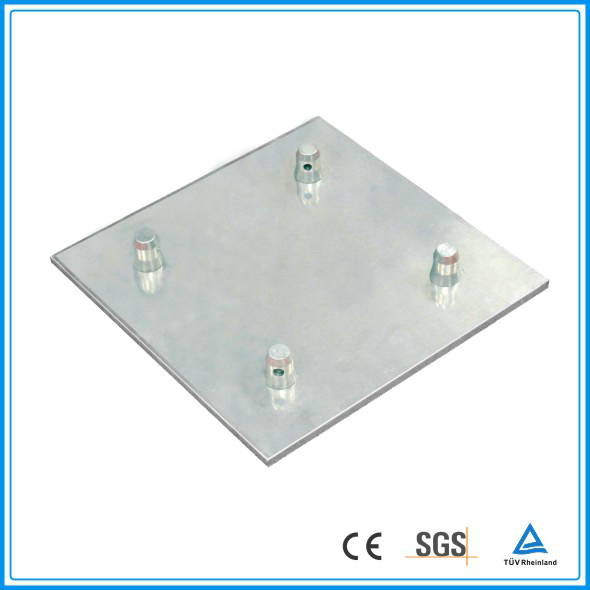
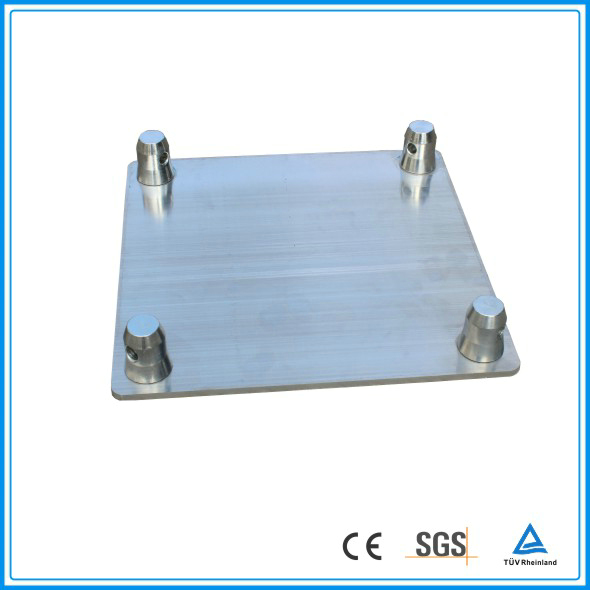
The fundamental purpose of a base plate in a bolt spigot truss system is to provide a secure and stable connection between the truss structure and its supporting surface. Unlike other connection methods, bolt spigot trusses rely on a precisely engineered system where a spigot on one truss section inserts into a receiving socket on the adjacent section, then secured with bolts. The base plate, therefore, serves as the foundational element for this system, transferring the entire load from the truss to the ground or supporting structure. Its design must account for a multitude of factors, including the anticipated load, the nature of the supporting surface, and the overall stability requirements of the entire truss configuration.
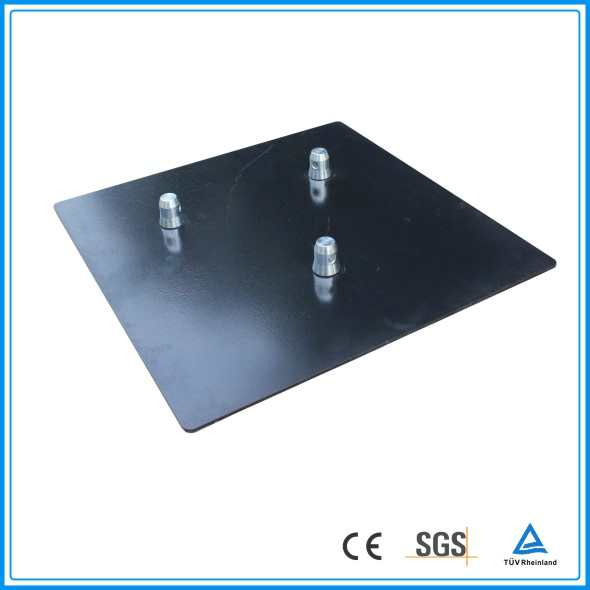
The design of an effective aluminum base plate for bolt spigot truss necessitates several key features. Firstly, it must possess sufficient surface area to distribute the concentrated load from the truss evenly across the supporting surface. This minimizes the risk of localized stress concentrations, preventing potential failure points. The design often incorporates reinforcing ribs or gussets to enhance stiffness and resistance to bending moments, further contributing to load distribution. Secondly, accurately positioned bolt holes are crucial. These holes must align precisely with the corresponding holes in the truss's spigot assembly, ensuring a secure and stable bolted connection. Any misalignment can introduce significant stress concentrations and compromise the structural integrity of the entire system. The precision of these holes is usually achieved through CNC machining processes, guaranteeing high accuracy and repeatability.
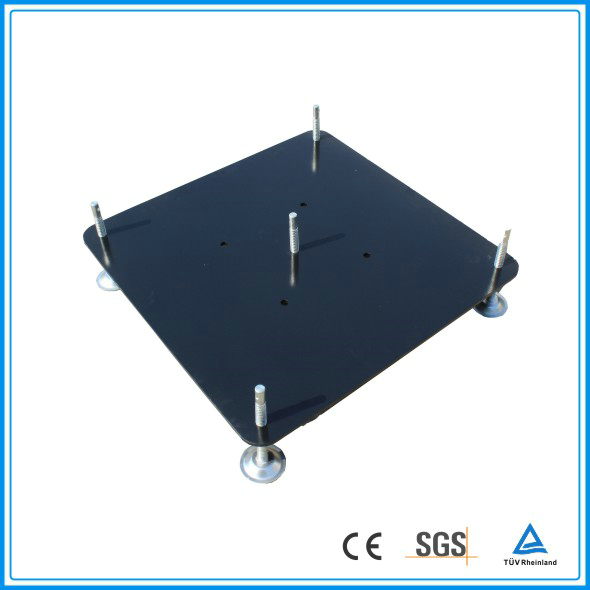
Material selection plays a vital role in the performance of the base plate. Aluminum alloys, particularly those in the 6000 series (e.g., 6061-T6), are preferred due to their excellent strength-to-weight ratio, corrosion resistance, and machinability. The specific alloy chosen will depend on the anticipated load and environmental conditions. For applications involving heavy loads or harsh environments, higher-strength alloys might be necessary. Surface treatments, such as anodizing, are often employed to enhance corrosion resistance and improve the overall durability of the base plate. The thickness of the base plate is also a critical design parameter, determined by the anticipated load and the desired safety factor. Thicker plates offer greater stiffness and load-bearing capacity but also increase weight and cost.
The functionality of the base plate extends beyond simple load transfer. Many designs incorporate features that enhance stability and ease of assembly. These might include pre-drilled holes for anchoring the base plate to the supporting structure, integrated leveling feet for adjusting the height and ensuring a level base, or slots that facilitate alignment with the truss during assembly. Furthermore, the surface texture of the base plate can be optimized to enhance friction with the supporting surface, preventing slippage and ensuring stability.
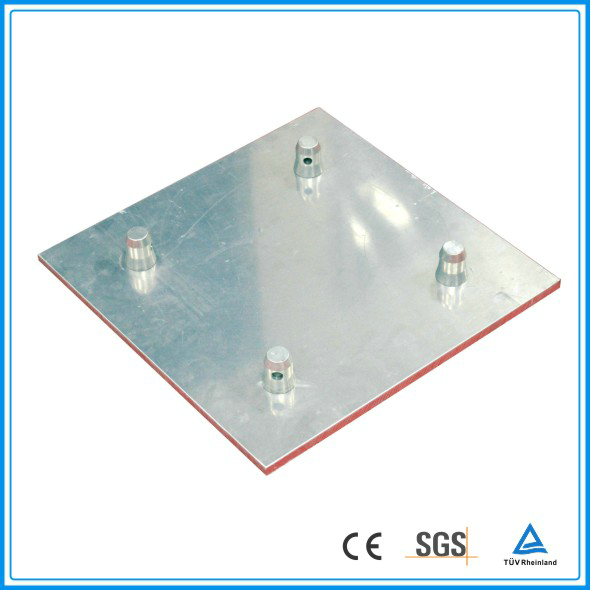
Applications for aluminum truss base plates are diverse and span various industries. In the entertainment industry, they support lighting rigs, sound systems, and stage sets. Construction projects utilize them to support scaffolding, formwork, and temporary structures. Exhibition and trade show booths often employ these base plates to secure display systems and signage. The specific design and features of the base plate will vary depending on the application, with heavier-duty plates used for high-load applications and lighter plates for less demanding situations.
The selection of an appropriate aluminum truss base plate involves careful consideration of several critical factors. These include the anticipated load, the type of supporting surface, the environmental conditions, and the overall safety requirements. Proper engineering calculations are essential to ensure the base plate’s capacity meets or exceeds the anticipated load. Compliance with relevant safety standards and regulations is also crucial, particularly in high-risk applications.